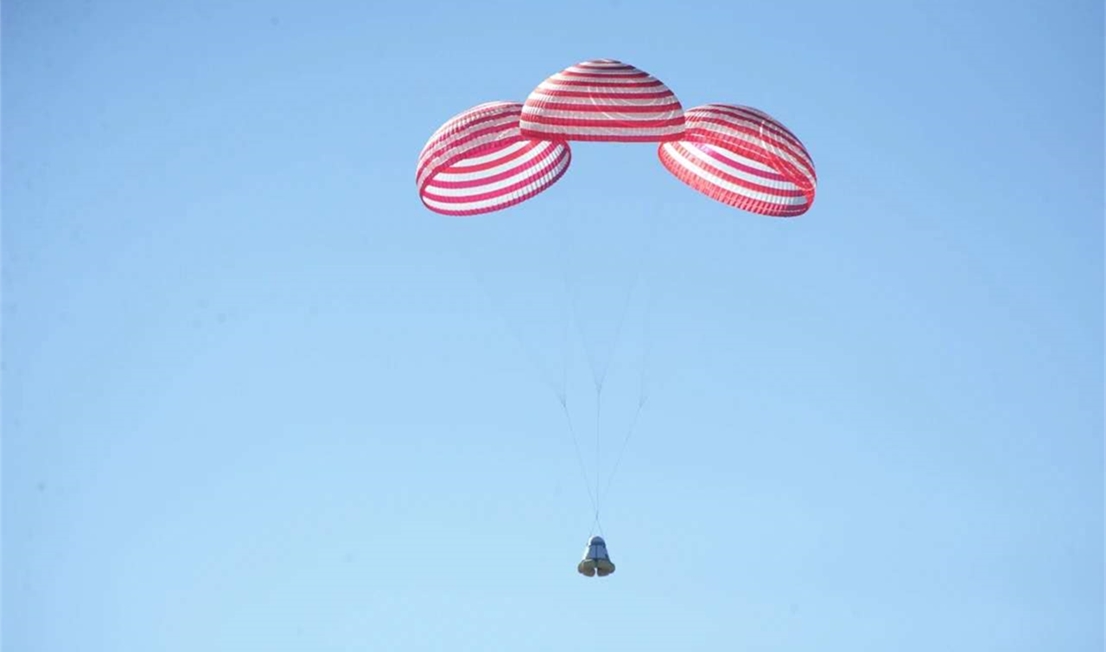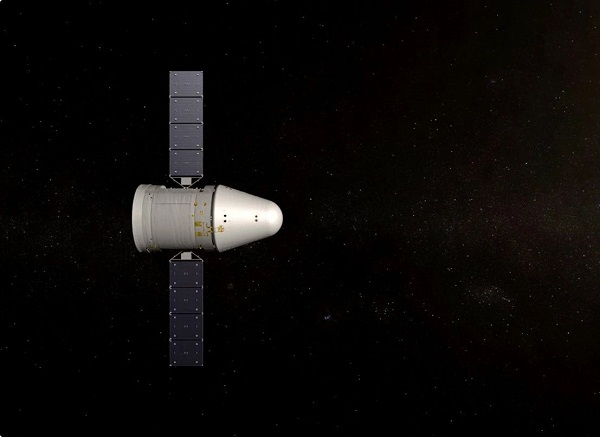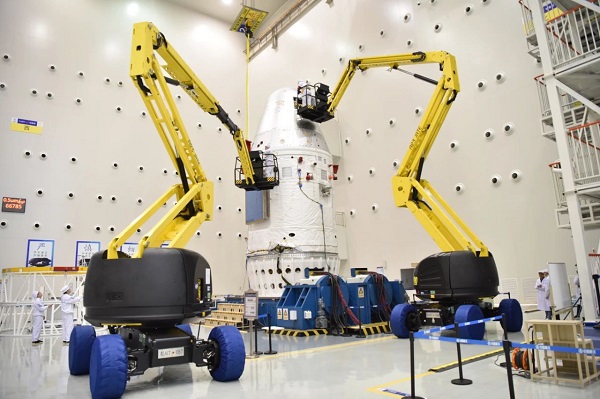China's new space capsule lands safely to end 1st uncrewed test flight
China's next-generation crew capsule successfully returned to Earth today (May 8) after nearly three days in orbit.
The capsule, which has not yet been named, launched on a Long March 5B rocket on May 5 on an uncrewed test flight that represents an important step toward China's goal of building a space station in orbit.
The capsule landed today at 1:49 p.m. local time in Beijing (1:49 a.m. EDT, 0549 GMT), having spent two days and 19 hours orbiting Earth, according to a statement from China Aerospace Science and Technology Corporation, a state-owned contractor for the space agency.
Related: China's new space capsule aces maneuvers in test flight

During its flight, the capsule executed seven trajectory maneuvers, reaching a maximum altitude of about 5,000 miles (8,000 kilometers). The landing procedure began about two hours before touchdown and tested important components like the heat shield, parachutes and air cushions.
The capsule is designed to hold six or seven astronauts at a time and is meant to facilitate exploration in low Earth orbit and beyond; the capsule could one day carry astronauts to the moon, according to Chinese government news service Xinhua. The capsule and its cylindrical service module together stand about 30 feet (9 meters) tall and nearly 15 feet (4.5 m) wide, according to CGTN.




According to comments released before this week's launch, a successful test flight would open the door to a slate of 11 missions revolving around space station construction. The Long March 5B rocket is an upgraded version of China's heavy-lift Long March 5 and will be the go-to booster to launch space station modules. During this week's test flight, the rocket also launched an experimental inflatable prototype for cargo reentry, but that vehicle suffered an "abnormal" return to Earth during its test, Chinese space officials have said.
Get the Space.com Newsletter
Breaking space news, the latest updates on rocket launches, skywatching events and more!
China has previously launched humans aboard its Shenzhou space capsules, but the new design includes several improvements, according to Xinhua, including a larger contiguous space for living and working and large electronic display screens.
The new capsule, which the government initiated research on in January 2017, is also designed to be reusable.
- Latest news about China's space program
- Russia and China are teaming up to explore the moon
- Photos from the moon's far side! China's Chang'e 4 lunar landing in pictures
Email Meghan Bartels at mbartels@space.com or follow her @meghanbartels. Follow us on Twitter @Spacedotcom and on Facebook.
OFFER: Save 45% on 'All About Space' 'How it Works' and 'All About History'!
For a limited time, you can take out a digital subscription to any of our best-selling science magazines for just $2.38 per month, or 45% off the standard price for the first three months.
Join our Space Forums to keep talking space on the latest missions, night sky and more! And if you have a news tip, correction or comment, let us know at: community@space.com.

Meghan is a senior writer at Space.com and has more than five years' experience as a science journalist based in New York City. She joined Space.com in July 2018, with previous writing published in outlets including Newsweek and Audubon. Meghan earned an MA in science journalism from New York University and a BA in classics from Georgetown University, and in her free time she enjoys reading and visiting museums. Follow her on Twitter at @meghanbartels.










